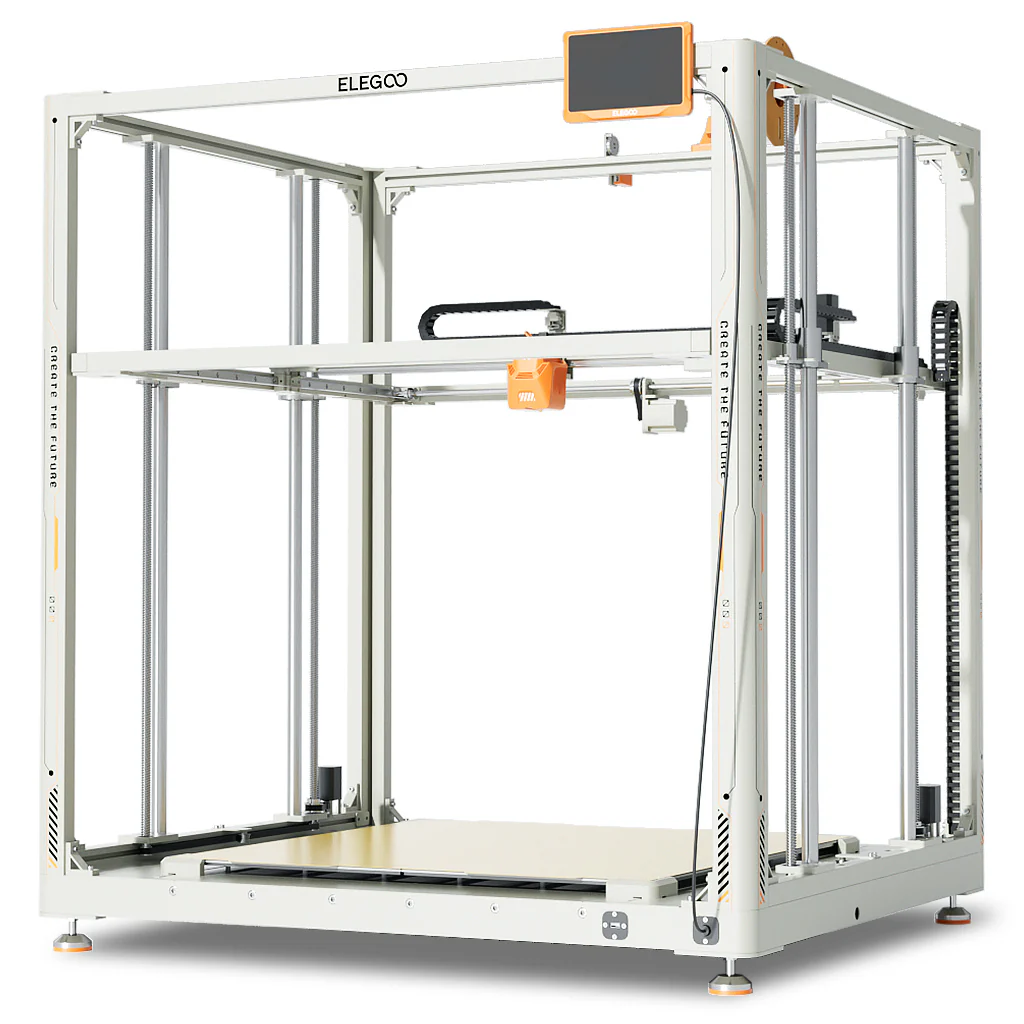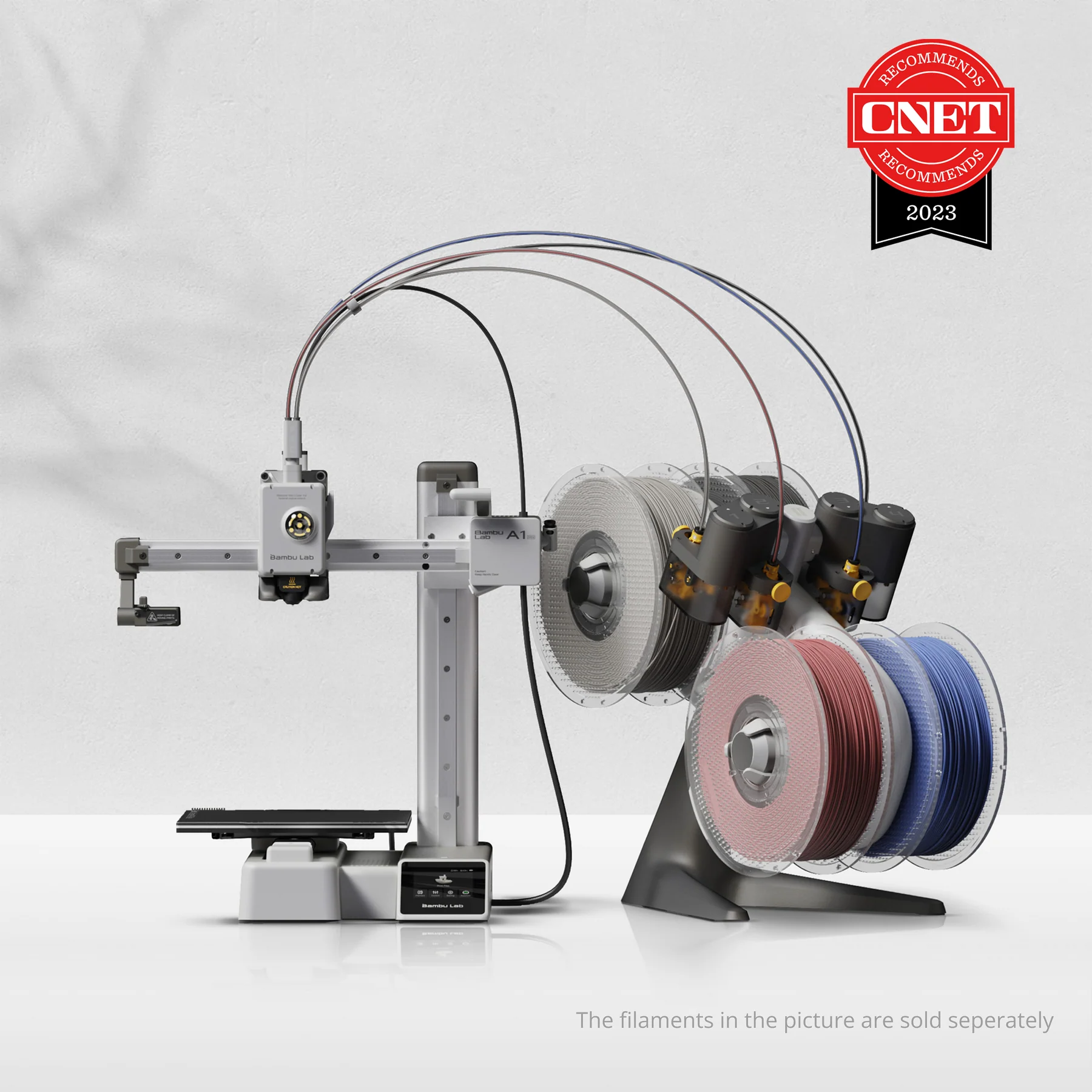Compare Orange Storm Giga vs A1 Mini
Comparison between the best 3D printers
Choose the best 3D printer at the best price. The cheapest 3D printers are here.
Buy a 3D printer here with 3D Fila.
 |
 |
|
| Model | Orange Storm Giga[BUY Orange Storm Giga] |
A1 Mini |
| Printing Material | Filament | Filament |
| Buy Filament for Elegoo Orange Storm Giga | Buy Filament forBambu Lab A1 Mini | |
| Estimated price | $2500,00 | $549,00 |
| Manufacturer | Elegoo | Bambu Lab |
| Release Year | 2024 | 2023 |
| Print Volume [mm] | 800x800x1000 | 180x180x180 |
| Printer Size [mm] | 1000x1000x1200 | 315x347x365 |
| Weight [kg] | 136 | 5,5 |
| Power Loss Recovery | YES | YES |
| Enclosed printer | NO | NO |
| Bed Leveling | Automatic | Automatic |
| Filament End Sensor | YES | YES |
| Bed type | Heated | Heated |
| Power supply system | Direct Drive | Direct Drive |
| Standard nozzle | 0,4 | 0,4 |
| Maximum Nozzle Temperature [°C] | 300 | 300 |
| Maximum Bed Temperature [°C] | 90 | 80 |
| Maximum printing speed [mm/s] | 300 | 500 |
| Filament holder | YES | YES |
| Camera for supervision | NO | NO |
| Recommended filaments | PLA, ABS< PETG, TPU | PLA, PETG, TPU, PVA |
| Recommended slicers | Elegoo Cura | Bambu Studio, Super Slicer, Cura, Prusa Slicer, Orca |
| Maximum Resolution [mm] | 0,1 | 0,1 |
| Processor | 32-bit Silenciosa | |
| Display | Touchscreen 7'' | Touchscreen 2,4'' |
| Power Supply | 150 W | |
| Connectivity | USB, LAN, Wi-Fi | Wifi, Bambu bus, Cartão SD |
| Operating systems | Windows, Linux e Macbook | Windows, Linux, Macbook |
| Date of registration in the system | 2024-10-09 | 2024-04-10 |
| Release date | 2024 | 2023 |
| Extra features | The Elegoo Orange Storm Giga stands out for its huge print volume of 800 x 800 x 1000 mm and its modular heated bed system with four independent zones, ensuring energy efficiency. It supports printing with multiple nozzles, allows print recovery after power failures and uses Klipper firmware, optimizing speed and quality. The portable 7-inch touchscreen and USB, Wi-Fi and LAN connectivity make operation more accessible and versatile. | The Bambu Lab A1 Mini stands out not only for its impressive speed and automatic calibration, but also for its multi-color printing capability thanks to AMS Lite. This innovative system makes multi-color printing easy, making it accessible to everyone. AMS Lite, specific to the A1 Mini, supports up to four different materials simultaneously, providing creative freedom without complications. With comprehensive sensors for energy monitoring and recovery, a camera for timelapses and Wi-Fi control, the A1 Mini and AMS Lite together offer an intuitive and advanced 3D printing experience, ideal for materials such as PLA, PETG and TPU, and designed for simplicity and fast maintenance with quick-change nozzles. |
| Support for multiple colors and materials (AMS and CFS) | NO | YES |
Notes * |
||
| Cost-benefit | 6 / 10 | 7 / 10 |
| Hardware | 3.2 / 10 | 4.2 / 10 |
| Tela | . | . |
| Print volume | 10 / 10 | 3 / 10 |
| Performance | 3 / 10 | 4 / 10 |
| [BUY Orange Storm Giga] |
Conclusion |
| In comparing the Elegoo Orange Storm Giga and the Bambu Lab A1 Mini, it is clear that both printers cater to different needs and priorities within the 3D printing community. The Elegoo Orange Storm Giga is aimed at users requiring substantial print volume and versatility for larger projects, making it an ideal choice for industrial applications or advanced hobbyists. Its robust features, such as a modular heated bed system, support for multiple nozzle configurations, and a 7-inch touchscreen interface elevate its usability. However, this model comes at a significantly higher price point. Conversely, the Bambu Lab A1 Mini presents a more accessible option, balancing affordability with impressive capabilities. It stands out with its speed, ease of use, and multi-material printing functionalities via the AMS Lite system. These features cater well to education and casual users who prioritize quick setups and straightforward operation over larger build sizes. Both printers boast automatic bed leveling and power loss recovery, ensuring user friendliness. However, user experience may vary based on the specific needs—whether a high-volume industrial capacity or a compact, user-friendly design for smaller projects. Ultimately, the choice between these two printers hinges on the user’s specific applications, budget constraints, and priorities such as print volume versus printing speed and material variety. |

